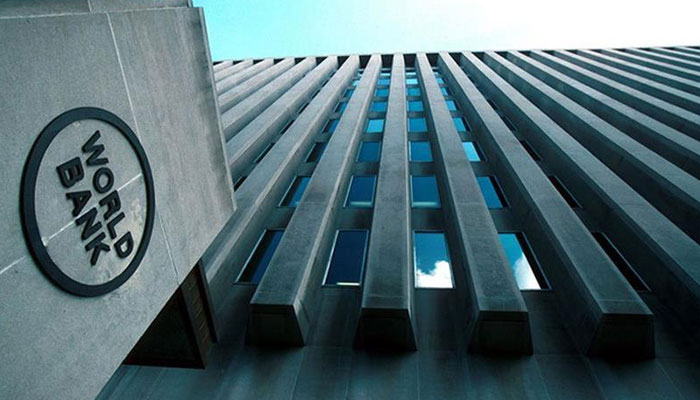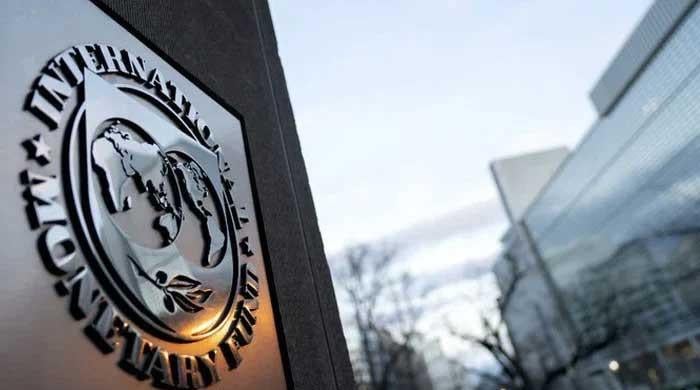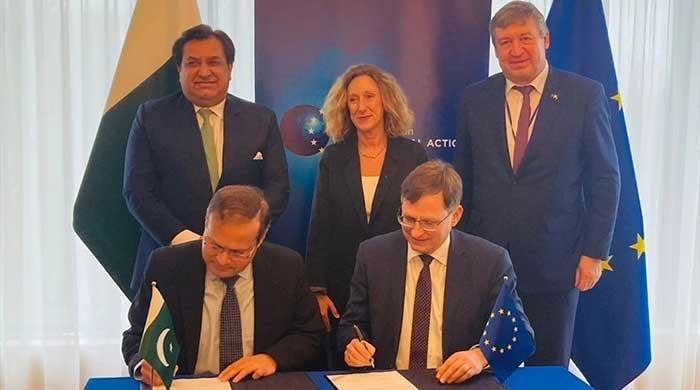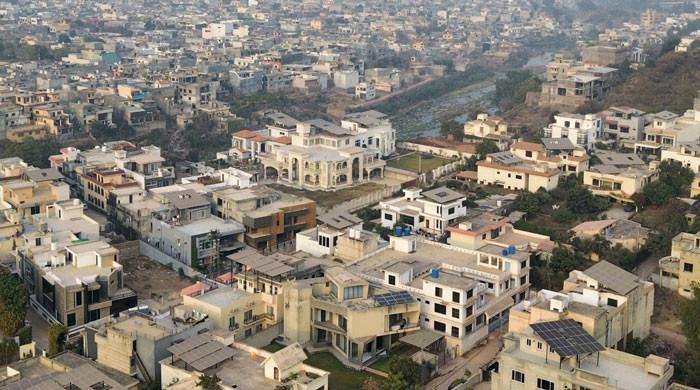Pakistan's economic outlook hinges on IMF programme, external financing: World Bank
Financial institution projects GDP growth rate of 2.8% for Pakistan, lower than Islamabad's official target of 3.5%
October 11, 2024

- World Bank report projects GDP growth rate of 2.8% for Pakistan.
- Business confidence likely to improve after credit rating upgrades.
- Pakistan’s lack of trade openness harming exports, it says in report.
ISLAMABAD: In its 'Pakistan Development Update: The Dynamics of Power Sector Distribution Reform' report, the World Bank identified the International Monetary Fund (IMF) programme, external financing and higher electricity tariffs as some of the major challenges faced by Pakistan's economy.
The bank, therefore, warned that Pakistan's macroeconomic projections heavily rely on the continuation of the Washington-based lender's programme and securing the additional external financing.
In its report released on Friday, the financial institution projected a gross domestic product (GDP) growth rate of 2.8% for Pakistan, lower than the government’s official target of 3.5%.
In its forecast, it mentioned the average inflation rate at 11.1% , a current account deficit of 0.6% of GDP, and a fiscal deficit climbing to 7.6% of GDP due to increased interest payments. Public debt is expected to reach 73.8% of GDP for the current fiscal year 2024-25.
The World Bank noted that Pakistan’s lack of trade openness is significantly harming exports, with an export gap of $60 billion. Specifically, Pakistan’s export gap with China stands at $13 billion, while the gap with the US is $6 billion.
“Policy uncertainty poses downside risks to the fiscal year 2025 and FY2026 outlook. The macroeconomic outlook depends on the effective implementation of the new IMF-EFF programme, fiscal restraint, expected rollovers, fresh external financing, and the absence of major policy disruptions or external shocks,” the World Bank stated in its Pakistan Development Update report, released on Thursday.
In the energy sector, a World Bank expert highlighted that electricity tariffs in Pakistan are higher — ranging from 4.7 cents to 6.8 cents per kilowatt-hour (kWh) — compared to other South Asian countries like India. The report also revealed that poverty in Pakistan stands at 40.5% this fiscal year, slightly higher than last year's 40.2%.
The World Bank’s economists warned that the projected growth rate of 2.8% is insufficient to significantly reduce poverty or unemployment. With 3.6 million new entrants expected in the job market over the next two fiscal years, this growth rate will not create enough jobs to absorb them. However, the bank also predicted that declining inflation could lead to further reductions in the policy rate, which has already been cut by 450 basis points (bps).
Under these assumptions, the World Bank expects Pakistan’s economic recovery to continue, with GDP growth reaching 2.8% in FY25, driven by the lifting of import restrictions and lower inflation. Business confidence is expected to improve following recent credit rating upgrades, the continuation of the IMF-EFF programme, reduced political uncertainty, and the implementation of fiscal reforms such as devolving constitutionally mandated expenditures to the provinces.
Even with these improvements, the World Bank expects output growth to remain below potential, reaching 3.2% in FY26, as the economy continues to face tight macroeconomic policies, high inflation, policy uncertainty and unresolved structural challenges.
Inflation is forecast to slow to an average of 11.1% in FY25 and 9.0% in FY26 due to lower commodity prices and tight fiscal policies. However, inflation is expected to remain elevated in the short term due to higher domestic energy prices, expansionary open market operations (OMOs), and new taxation measures.
The State Bank of Pakistan (SBP) has already reduced the policy rate, with cuts of 150bps in June, 100bps in July, and another 200bps in September, bringing the rate down to 17.5% from a peak of 22%. Further rate cuts are anticipated as inflation continues to moderate.
The report highlighted that the energy sector poses significant risks to fiscal sustainability and economic growth in Pakistan. Despite improvements in generation capacity, power distribution companies (Discos) continue to suffer from high losses and poor financial performance, contributing to high electricity costs.









